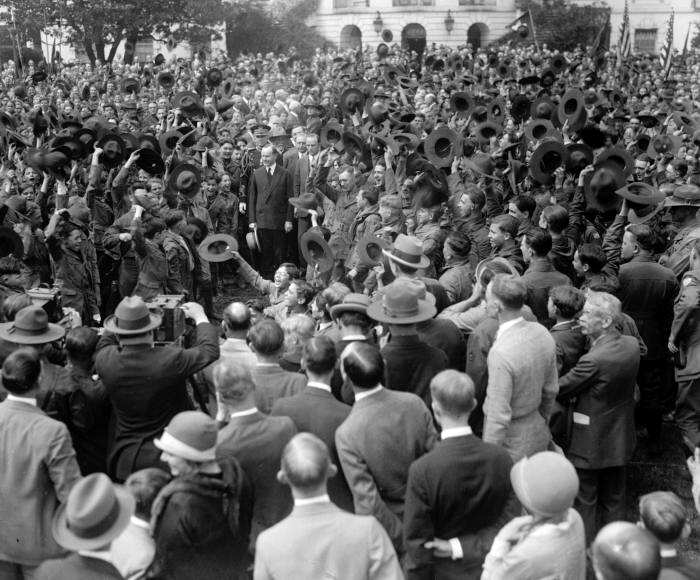
United States Elections: Presidential Elections (1926)

Figure 1.--President Coolidge continued to be enormously popular with the American people. Here he is at the White House
with the Boy Scouts in 1926. The Scouts were founded in 1909 and every American President until President Obama has wanted photographs like this with Scout groups. Despite the President's popularity, the party out of party, in this case the Democrats, made gains. There were substantial Democratic gains in the Senate, but only minor gains in the House. The Republicans retained a hold on both chambers.
|
|
The 1926 Congressional by-election was held during presidency of Calvin Coolidge. It was Coolidge's second term, but as he suceeded President Harding, it was the first by-election from his own victory in 1924. President Coolidge struck a cord with the American people and was enormously popular. The party holding the presidency usually loses seats in by-elections and this is what occurred in 1926 even with a popular president in the White House. No major issue dominated the campaign. The issues fought out by the Congressional candidates primarily concerned business and labor issues and the extent the Federal government should interfere. The Republicans lost seats, but retained a hold on both houses. The Republicans continued to hold a firm grip on the House. Despite the President's popularity, the Democrats made substantial gains in the Senate, but only minor gains in the House. The Democrats gained 6 seats in the Senate, a substantial achievement. The Republicans held the Midwest, except Oklahoma. The Democratic gains were mostly in the northeast and border states. Labor issues helped the Democrats in both New York and Masachusetts. Even so, the Republicans retained a narrow hold in the Senate. The Republicans only lost 9 seats in the House. Primarily because of the small populist Farmer-Labor Party, the Democrats gained 11 seats. The gains were mostly in the Northeast abd unlike the Senate races in the Republican Midwest stronghold. This showed the growing importance of labor, but also increasing farm problems.
HBC

Navigate the Boys' Historical Clothing Web Site:
[Return to the Main U.S. 20th century election page]
[Return to the Main U.S. presidential page]
[Return to the Main U.S. political party page]
[Return to the Main U.S. history page]
[Introduction]
[Activities]
[Biographies]
[Children]
[Chronology]
[Clothing styles]
[Countries]
[Essays]
[Bibliographies]
[Contributions]
[FAQs]
[Glossaries]
[Images]
[Links]
[Registration]
[Tools]
[ Boys' Clothing Home]
Created: 8:14 AM 8/19/2010
Last updated: 8:14 AM 8/19/2010



